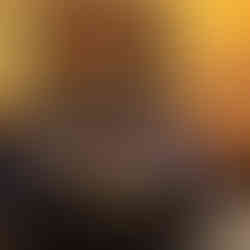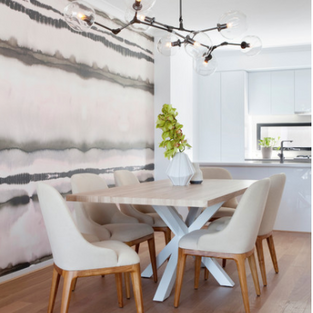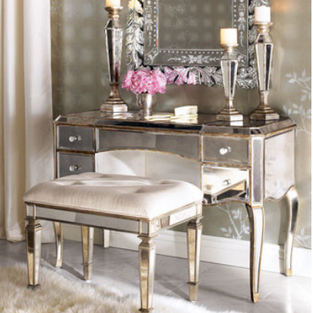Top 10 Interior Themes
- Dhinesh Prabhas
- Dec 15, 2020
- 5 min read
1. Traditional
Balance and symmetry are the key words that define this style. A traditional style décor provides the feeling of warmth and comfort through colours, furniture designs and furniture placement. Furniture pieces are placed in a formal manner at a focal point in the room and the arrangement is focused on comfort. A sense of order and familiarity is reflected from the architecture and the accessories.
One of the signature elements of the traditional style is its use of abundant fabrics. Along with upholstered furniture, you will find a heavy hand with curtains and other window treatments. There is liberal use of typical accessories, such as vases, candle stands, bowls, accent pieces, sculptures and mirrors. Accessories are usually used in pairs to give a balanced look.
2. Modern
Form follows function in modern interiors. This style was a response against the traditional look – asymmetry is celebrated and its design essence includes clean lines in architecture and furniture. The emphasis is more on open floor plans and clutter free décor.
Here clutter free entails less use of accessories. Usually, paintings are used to complement the rest of the space. Modern style gives a sense of space and thus is best suited for apartments as it makes the place look larger. This style takes a totally different route from the traditional style in terms of materials used as well; you will see more of chrome, glass and concrete.
3. Eclectic
An eclectic design brings together a variety of styles and periods through furniture and décor elements. While this style provides a perfect way to project your personal aesthetic sense, there is a risk of the décor ending up as a mess. The trick is to find harmony through scale, proportion and composition. The variety of pieces, different in colour, texture and design need to find a rhythm when put together. This is achieved by creating a focal point in the room and finding a common ground among the furniture and accessory pieces
Furniture, Individual pieces in a variety of materials and designs form the backbone of an eclectic set up. Go by the rules of matching opposites and play shiny finish against matte and monochromes against bright hues. The same rule applies to materials as well. Colour There are no restrictions in terms of colours; bright primary colours can be placed with pastels, different shades of the same colours can be used through different décor elements. Neutrals are present in order to provide a breather. Though found in abundance, colours actually play a unifying role in an eclectic room.
4. Contemporary While it is often confused with the modern style, this one is a more serious interpretation of it. Here the focus is on the basics of line, shape and form; the overall look is always fresh and importance is given to open spaces and natural light. Sleek features and clean lines without any extravagant element are what define these spaces. The look is muted and masculine. Here visual interest is created with materials rather than with colours.
Furniture ,Clean lines with softer edges and slim silhouettes are the trademark of contemporary furniture. Light-coloured woods are used with natural fabrics; the upholstery is well-tailored without any ruffles or skirts. Clean lines are given priority. However, this does not mean that the furniture designs are minimal; textures, such as weaves, are often seen in these spaces.
5. Minimalist
Less is more in the minimalist style. A room with this design not only has minimum furniture but each piece is minimal in itself. Here each furniture piece is given room to breathe so you see an abundance of empty space.
Furniture, The furniture set up can include only the essential pieces with streamlined shapes and neat designs. If upholstered, the fabrics are solid and subdued in colour and can have shiny surfaces.
6. Indian
A riot of colours and abundance of patterns brought together is how one can define Indian décor. This style is not about the subtle and the subdued. While many patterns are seen in fabrics, furniture, wallpapers and even flooring, paisley and other Indian motifs take prominence.
Statue of deities, such as Ganesha, carpets with intricate patterns, and curtains made of materials like jute, are the predominant markers of this design style.
Furniture, Indian furniture is anything but minimalist; intricate carvings on furniture and jaali work are the staple of the Indian décor style. Quintessentially Indian pieces, such as sandook, chairs with carvings on the backrest, traditional cabinets and poster beds abound.
7. Industrial
Unfinished, raw and a little rustic, the industrial design style brings the warehouse lookinside your four walls. This style got popular, as the trend to convert old factories into loft or studio apartment gained momentum. An open floor plan, high ceilings, bare windows, exposed pipes, bare bricks on the wall and rough surfaces are some of its characteristics. The architecture of the room is on full display and polished concrete floors usually anchor the whole look.
Furniture, Cold metals, such as tin, steel, iron and aluminium dominate the basic infrastructure of an industrial-style room. Wood and concrete are other preferred materials. Lighting fixtures also usually have metal finish.
8. TransitionalTexture and material take precedence over colour in these well-put together rooms with reasonable amount of accessories. Since it mixes two styles, one has the liberty to choose from a diverse range of floors, wall treatments etc.
Furniture, Curves meet straight lines here. Traditional sofas and chairs are upholstered in modern fabrics and prints.
9. Bohemian
For me, this design style reflects the beauty of chaos. Like the name suggests, this style is all about a carefree spirit which follows no rules. Each boho set up is totally different from the other, but is also similar, as there is an unconventional use and mix of accessories. Layering is the go-to technique, and often elements from different era and countries are used. There is no dearth of colours, patterns and fabrics; priority is given to ethnic patterns and brighter hues.
Furniture, Vintage items are preferred. Most pieces possess a nomadic/tribal vibe. ColourA wide range of colours is part of the Boho style’s palette. Different hues of the same colour are also included in the colour scheme.
10. Art Deco
Old school glamour of the Jazz Age comes alive with art deco. This style gained fame during the ‘20s and ‘30s, when glitz and opulence were all the rage.
Bold graphic elements, rich finishes and elegant accessories sum up the essentials. Think high-gloss metals, pearl or tortoise shell finishes, shiny fabrics and mirrors.
FurnitureAlong with mirrors of various geometric shapes, reflective furniture pieces, such as consoles, tables, and chest of drawers, are distinct features of an art deco style. Lacquer finish, polished wood or glossy paint are popular choices for treatments in furniture.





















Comments